How Long Does Liquid Nails Take to Dry?
Author: Omar Alonso | Editor: Omar Alonso
Review & Research: Jen Worst & Chris Miller

Liquid Nails is a very popular adhesive used in construction projects, and it's an excellent adhesive due to its versatility and strength. But how long does Liquid Nails take to dry before we can continue on with our projects?
While Liquid Nails can bond to several types of materials, it's essential to understand drying time according to the various materials you use it with.
What Is Liquid Nails?
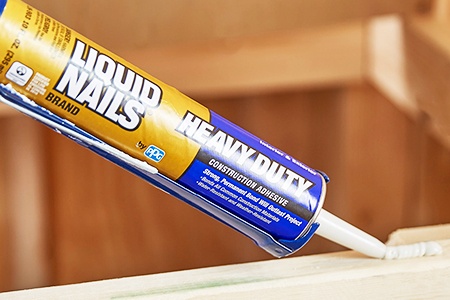
Liquid nails is a construction adhesive used to bond materials. It's preferred over nails because it's very easy to work with and eliminates the risk of potential injuries.
Working with nails can be a hassle and cause strain on your arms and wrists. They can also be problematic in smaller spaces where hammers can’t fit.
However, Liquid Nails allow you to apply these types of glue and finish your project as quickly as possible. Liquid Nails is very convenient, but some factors can impact how well it works.
What Affects the Liquid Nails Dry Time?
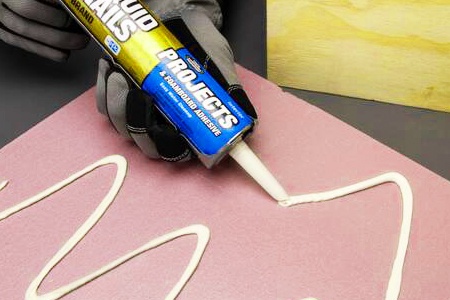
How long does Liquid Nails take to dry? Many factors can impact how fast it can dry. This includes the type of the product you’re using, how much was applied, the ambient temperature, humidity and moisture levels, ventilation in the area, and how porous and the thickness of the materials being bonded.
The Type of Liquid Nails
Liquid Nails come in various types, each composed of different ingredients and chemicals. The adhesive compound determines the drying speed.
Some Liquid Nails dry within 48 hours, while others only take 4-6 hours to dry. Adhesives with a polyurethane base are known to dry the fastest. While the typical Liquid Nails cure time is 48 hours maximum, the polyurethane bases can cure in just 10 minutes. Always consult the information on the packaging to know exactly.
How Much Product You Used
The amount you use will also determine drying time; the more you use, the longer the drying time. Don't fall under the mental trap of "more is better." Follow the instructions provided with the product.
Temperature
Temperature also determines the drying time; the temperature of the materials you're bonding and the air temperature will play a role. If it's cold outside, Liquid Nails will take much longer to dry, but the warmer the temps, the faster the dry time.
However, if you're dealing with cold temperatures below 40 degrees, it's best to choose something other than Liquid Nails, as this low temperature renders the product ineffective.
Moisture & Humidity
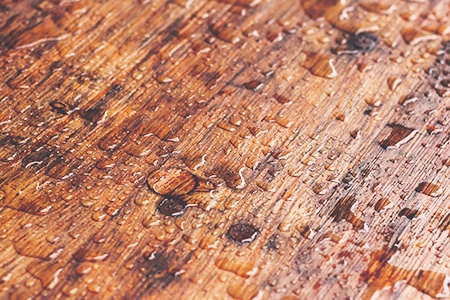
Moisture and humidity in the air can pose a challenge for drying since Liquid Nails is an adhesive that contains moisture. The air helps to remove that moisture during the drying process, and moisture or humidity will create a significant problem during a project if you're not careful.
Also, if the humidity in the air is 60 percent or higher, it will cause a delay in the drying process. So in the case of having materials with a wet surface or if your environment is too humid, it's best to use an adhesive with a rubber base.
Ventilation
Since Liquid Nails is a liquid, airflow can help soak up that moisture, making proper airflow critical during the drying period. No airflow means no evaporation, so ensure the room is well-ventilated to aid in a quick dry time.
The Thickness of the Product
The thicker the product layer, the longer it will take to dry. Although Liquid Nails is relatively dense, multiple layers will make it thicker, leading to the possibility of a dry time lasting several days. Again, ensure to read the instructions to avoid any application mistakes properly.
Material Being Bonded
How fast does Liquid Nails dry? Any material you apply Liquid Nails to has a different porosity, which determines how fast the adhesive will take to dry on the material. Materials such as brick, wood, masonry, and cement are porous. Since they are porous, they will quickly remove the moisture from the adhesive, helping it to dry faster.
Other materials such as glass and plastic aren't porous, thus causing drying time to take longer typically. These materials cannot absorb moisture since they have low porosity, which causes the drying time to take significantly longer, sometimes over 24 hours.
In worst cases, Liquid Nails can take weeks or several days to dry on non-porous materials. That's not remotely the typical Liquid Nails setting time, but if all the variables work against you, it can be the case.
How Can You Speed Up Drying Time?
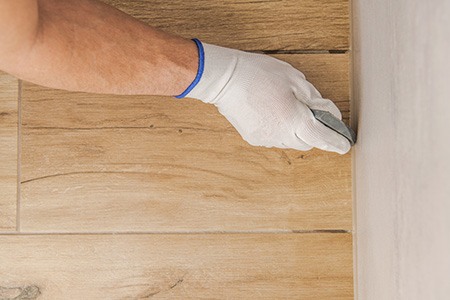
How long does Liquid Nails take to dry? It can be variable if you help the process along. There are a few ways to speed up the drying process, and the first is by using heat. You can use heat from a space heater or any environment where you can control the climate. However, the area should warm to at least 70 degrees for the best results.
Also, you can use air to speed up drying time. For example, place a fan in the area to help evaporate the moisture from the adhesive.
Both of these techniques will help Liquid Nails to cure or harden in a much quicker time frame. However, remember that you want the areas to be warm and warm, and an imbalance of temperatures will cause the adhesive to cure improperly.
Is Liquid Nails Toxic?
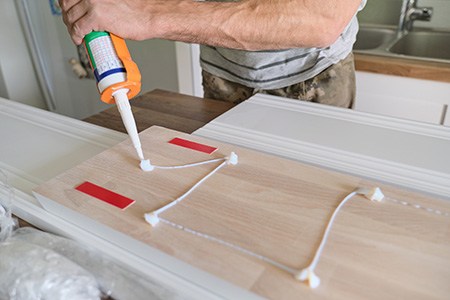
Liquid Nails is an exciting substance because it's toxic but only temporarily. Also, since it's solvent-based, it's only poisonous when wet. However, once it dries, it can't cause any harm. So it's best to practice caution when handling it during projects.
While it's wet is when it emits chemicals and fumes. These fumes are typically potent and are another cause for the need to work in a ventilated area.
Once it dries, it's completely safe, which means it is no longer flammable and won't cause any problems regarding toxicity. While applying Liquid Nails, it's best to wear protective gear, including coverage for the face, eyes, hands, and clothing.
You should seek immediate medical attention if you contact the substance directly. Upon purchasing, ensure you pay attention to the ingredients. Liquid Nails based on latex are the best option to avoid toxic chemicals.
What to Do if Liquid Nails Gets on Your Skin
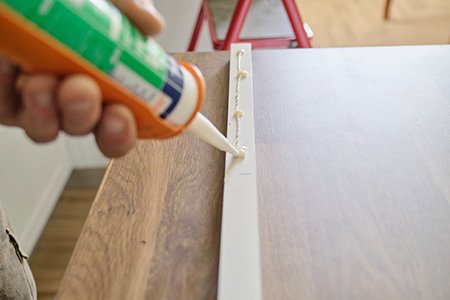
Getting this product on your hands is a lot better than driving normal types of nails through one. Liquid Nails can be very harmful to the skin, causing severe irritation. So it's essential to understand what to do if your skin becomes exposed.
If you get the solvent-based version of Liquid Nails onto your skin, you can use mineral oil or petroleum jelly to remove it. You must apply it to the skin and leave it on for at least 12 to 24 hours.
The latex version will only require soap and water to wash it off the skin. And since you're here, you're likely the type that does the kind of hard work where you'll get spray foam on your hands, too, in which case you can learn to remove it here.
Liquid Nails Drying Time on Various Surfaces
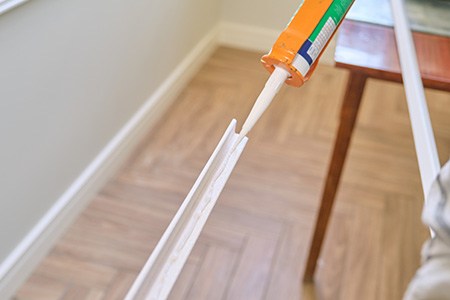
Drying time dramatically varies depending on the material's surface and the environment they're in. How long does it take for liquid nails to dry? Depends on the surface. Let's explore it.
Plastic
Plastic is one material that Liquid Nails take a while to dry on. It typically takes 4 hours to dry but can extend up to 24 hours depending on other environmental factors.
Wood
The drying process on wood is different than most materials. Once applying Liquid Nails to the wood, the drying process begins within 10 minutes.
However, it only completely dries after 24 hours have passed. So, it's best to only touch or apply pressure to wood until the 24 hours are up.
Metal
Liquid Nails also take some time to dry on metal. More often than not, it will usually take between 4 to 6 hours but 24 hours at most.
Concrete
Concrete is one material that Liquid Nails bond to very fast. It usually takes 15 minutes for the adhesive to bond, but drying time can still be impacted by the same factors that affect other materials. This is about the same amount of time it takes PVC glue to dry, as a frame of reference.
Best Environment for Liquid Nails

Creating an ideal environment will help promote a quicker drying time. Here are some ways to properly prepare an environment that will help the adhesive dry faster.
- Open windows to help decrease humidity
- Make sure the temperature in the air is between 40 and 90 °F
- Ensure the material surface is dry and clean before application
- Use a dehumidifier if needed
On a side note, you mustn't disturb the adhesive after application. Any sudden movements or minor mishaps can create a problem with the bonding process. The quicker you apply it without disturbing it afterward, the faster it dries with no problems.
Tips for Removing Liquid Nails
Sometimes mistakes happen during a project like getting this glue on your carpet, and you must take things apart. Although Liquid Nails can bond pretty quickly for many materials, there are ways you can remove them.
- Remove it using a heat gun, hot iron, or blow dryer to soften the adhesive
- Use a hand scraper or putty knife to scrape it and remove the bond
- Use petroleum jelly to loosen the adhesive
You will undoubtedly be left with some minor residue. This will be okay provided it’s a very small amount and a thin layer doesn’t cover the entire surface you need to re-glue.
Liquid Nails' Drying Time Explained
Liquid Nails is an alternative to regular nails and is helpful for those hard-to-reach spaces and a safer option in many cases. Liquid Nails bond to several different materials, but drying time is a key factor in the use of the product.
But how long does Liquid Nails take to dry? While the adhesive begins drying after about 15 minutes, factors such as material, air quality, temperature, and ventilation can impact drying time. Give it 4 to 6 hours typically, but expect to wait a full 24 hours for it to cure.



